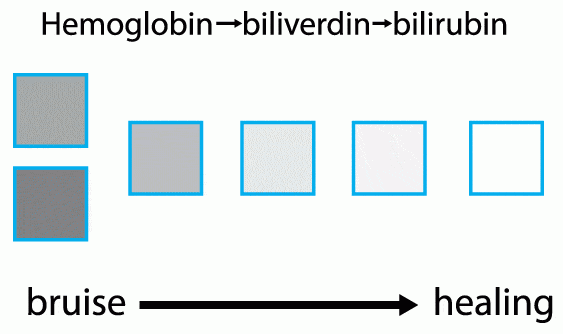Sometimes, the bruise does not form at the site of injury but near to it. This is called “ectopic bruising” and occurs when the leaking blood escapes to a nearby site under the force of gravity or other factors. A good example is a black eye, which results from trauma to the anterior part of the scalp or forehead; the blood accumulates in the loose tissue surrounding the eye.
Who is more at risk of acquiring contusions?
Age:
The elderly are more prone to developing bruises compared to young people. The vascular lining weakens with age and becomes more susceptible to damage from trauma.
Sex:
Females bruise more easily due to the presence of a relatively greater amount of fatty tissue under the skin.
Medications:
Blood thinners such as aspirin, warfarin, etc., decrease the coagulating capability of the blood; leading to easy bruising. On the other hand, steroids affect the microvasculature of the skin, which ruptures readily.
Bleeding disorders:
These may be inherited, such as hemophilia, or may result from certain diseases that damage the organs involved in the manufacture of clotting factors, for example hepatitis leading to liver cirrhosis. A deficient clotting system makes one susceptible to bruising, which may be quite extensive and life threatening in severe cases.
Factors affecting the size of a bruise:
The size of resulting contusion or bruise is directly dependent upon:
- Force of impact
- Vascularity of the area
- Presence of loose tissue; the more loose tissue, more area there is available for blood pooling
A lighter skin complexion makes the bruise appear more prominent.
Associated symptoms:
Bruising is associated with pain and swelling of the injured tissue. Pain results from compression of local nerve endings by the leaking blood. Swelling is partly from blood leakage and partly due to inflammation. The color changes from reddish to purplish and finally to a brownish color. These changes occur due to degradation of iron compounds in the blood.








